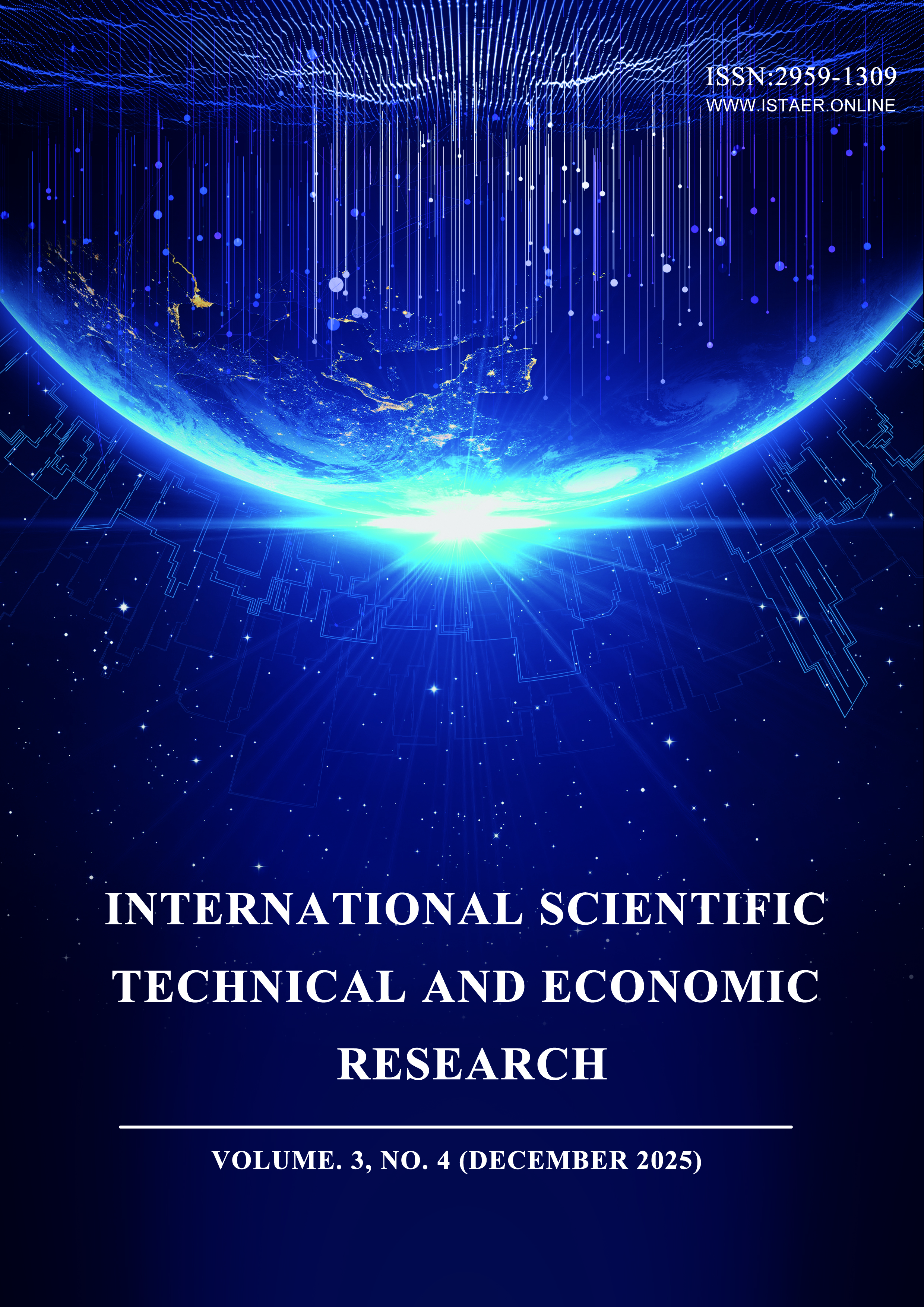Research and Development of Robotic Grinding and Polishing Process Parameter Adaptive Control System
DOI:
https://doi.org/10.71451/ISTAER2557Keywords:
Robotic grinding and polishing; Process parameters; Adaptive control; Force control; Intelligent regulation; System developmentAbstract
With the increasing demands for surface quality in intelligent manufacturing, robotic grinding and polishing technology has become a key solution due to its flexibility. However, traditional robotic grinding and polishing based on fixed parameters struggles to cope with process disturbances such as workpiece geometric errors and tool wear, leading to unstable processing quality. Therefore, this study focuses on the research and development of an adaptive control system for robotic grinding and polishing process parameters. This paper first analyzes the grinding and polishing process mechanism and adaptive control theory, constructing a robot-workpiece-tool interactive dynamics model and a process model based on contact force. Then, a core algorithm based on high-precision force or position hybrid control and incorporating a fuzzy adaptive strategy is designed, realizing the dynamic optimization of key parameter control for feed rate and spindle speed based on real-time force feedback. At the system implementation level, a hardware platform is constructed by integrating an industrial robot, a six-dimensional force sensor, and a grinding and polishing spindle, and a software system with real-time control and human-machine interaction functions is developed. Experimental results show that, compared with fixed parameter grinding and polishing, this system can reduce the range of surface roughness (Ra) by about 40%, and exhibits excellent material removal uniformity and strong robustness to changes in working conditions in the processing of complex curved surfaces, effectively verifying the advanced nature and engineering application potential of the proposed method and system.
References
[1] Chen, F., Bao, R., Peng, J., Lv, Z., & Wang, K. (2025). Recent advances in high precision grinding and polishing of robots for complex surface. The International Journal of Advanced Manufacturing Technology, 1-27. DOI: https://doi.org/10.1007/s00170-025-16488-6 DOI: https://doi.org/10.1007/s00170-025-16488-6
[2] Zhou, H., Ma, S., Wang, G., Deng, Y., & Liu, Z. (2021). A hybrid control strategy for grinding and polishing robot based on adaptive impedance control. Advances in Mechanical Engineering, 13(3), 16878140211004034. DOI: https://doi.org/10.1177/16878140211004034 DOI: https://doi.org/10.1177/16878140211004034
[3] Wang, G., Deng, Y., Zhou, H., & Yue, X. (2023). PD-adaptive variable impedance constant force control of macro-mini robot for compliant grinding and polishing. The International Journal of Advanced Manufacturing Technology, 124(7), 2149-2170. DOI: https://doi.org/10.1007/s00170-022-10405-x DOI: https://doi.org/10.1007/s00170-022-10405-x
[4] Yin, J., Ma, J., Xie, W., Sun, Y., Liu, M., & Li, Y. (2022, March). An adaptive control method for robot constant force polishing device. In 2022 5th International Conference on Information and Computer Technologies (ICICT) (pp. 159-165). IEEE. DOI: https://doi.org/10.1109/ICICT55905.2022.00035 DOI: https://doi.org/10.1109/ICICT55905.2022.00035
[5] Ge, J., Deng, Z., Li, Z., Liu, T., Zhuo, R., & Chen, X. (2023). Adaptive parameter optimization approach for robotic grinding of weld seam based on laser vision sensor. Robotics and Computer-Integrated Manufacturing, 82, 102540. DOI: https://doi.org/10.1016/j.rcim.2023.102540 DOI: https://doi.org/10.1016/j.rcim.2023.102540
[6] Chen, B., Qi, J., & Zhang, D. (2021). An adaptive parameters adjustment and planning method for robotic belt grinding using modified quality model. Proceedings of the Institution of Mechanical Engineers, Part B: Journal of Engineering Manufacture, 235(4), 605-615. DOI: https://doi.org/10.1177/0954405420970080 DOI: https://doi.org/10.1177/0954405420970080
[7] Jimin, G. E., Zhaohui, D. E. N. G., Wei, L. I., Chongyang, L. I., Xi, C. H. E. N., & Deping, P. E. N. G. (2021). Research Progresses of Robot Grinding and Polishing Force Compliance Controls. China Mechanical Engineering, 32(18). DOI: https://doi.org/10.3969/j.issn.1004-132X.2021.18.011
[8] Li, X., Zhao, H., Zhou, H., Cai, Y., Yin, Y., & Ding, H. (2025). Robotic grinding and polishing of complex aeroengine blades based on new device design and variable impedance control. Robotics and Computer-Integrated Manufacturing, 92, 102875. DOI: https://doi.org/10.1016/j.rcim.2024.102875 DOI: https://doi.org/10.1016/j.rcim.2024.102875
[9] Luo, L., Qiu, K., & Huang, C. (2025, October). Dynamic Trajectory Planning for Automatic Grinding of Large-Curved Forgings Based on Adaptive Impedance Control Strategy. In Actuators (Vol. 14, No. 10, p. 487). MDPI. DOI: https://doi.org/10.3390/act14100487 DOI: https://doi.org/10.3390/act14100487
[10] Xie, H. L., Wang, Q. H., Ong, S. K., Li, J. R., & Chi, Z. P. (2022). Adaptive human-robot collaboration for robotic grinding of complex workpieces. CIRP Annals, 71(1), 285-288. DOI: https://doi.org/10.1016/j.cirp.2022.04.015 DOI: https://doi.org/10.1016/j.cirp.2022.04.015
[11] Pan, J., Chen, F., Han, D., Ke, S., Wei, Z., & Ding, H. (2025). Adaptive process parameters decision-making in robotic grinding based on meta-reinforcement learning. Journal of Manufacturing Processes, 137, 376-396. DOI: https://doi.org/10.1016/j.jmapro.2025.02.005 DOI: https://doi.org/10.1016/j.jmapro.2025.02.005
Downloads
Published
Issue
Section
License
Copyright (c) 2025 International Scientific Technical and Economic Research

This work is licensed under a Creative Commons Attribution-NonCommercial-NoDerivatives 4.0 International License.
This work is licensed under the Creative Commons Attribution International License (CC BY 4.0).




